Search Results
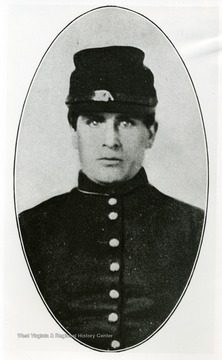
- IDNO:
- 001260
- Title:
- McKinley, Private William Jr.
- Date:
- undated
- Description:
- Portrait of Private William McKinley, Jr. of Company E. 23rd Ohio Volunteer Infantry. From a photo of the 18 year old Poland, Ohio lad which was probably taken at Camp Chase, Ohio before he left for the West Virginia front. See West Virginia Collection Pamphlet 6610 and Boyd Stutler's 'West Virginia in the Civil War.'
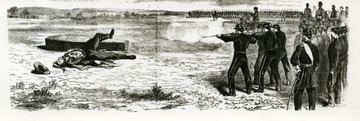
- IDNO:
- 001262
- Title:
- Military Execution
- Date:
- undated
- Description:
- Sketch of a military execution. Before the war ended there were many such scenes enacted in the meadow that is now Charlestons West Side. See West Virginia Collection Pamphlet 6610 and Boyd Stutler's 'West Virginia in the Civil War.'
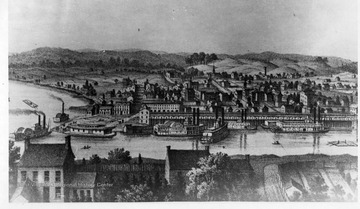
- IDNO:
- 001263
- Title:
- Parkersburg During the Civil War
- Date:
- undated
- Description:
- Sketch of Parkersburg during Civil War. Gateway to the interior by water and rail, it was a busy military forwarding center during the war. Terminal of the Northwestern Virginia Railroad, branch of the Baltimore and Ohio from Grafton, river port, and headquarters of the U.S. Navy tin-clad patrol boats it was a key point in the western defense. The long, low building along the river was the railroad freight station. See Boyd Stutler's 'WV in the Civil War.'

- IDNO:
- 001266
- Title:
- Junction Where Battle Between Averell and Patton Took Place
- Date:
- 1912
- Description:
- Junction of the Anthony's Creek Road and the James River and Kanawha Turnpike 'now route 60' where Averell's force met Patton's brigade in a head on collision. This was the scene of the fiercest fighting; the road in the center was filled with the dead and wounded. Photo taken about 1912 is from Mac Corkle's 'White Sulphur Springs. See West Virginia Collection Pamphlet 6610 and Boyd Stutler's 'West Virginia in the Civil War.'
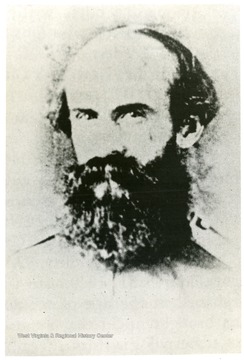
- IDNO:
- 001268
- Title:
- Jones, Brig. Gen. William E.
- Date:
- undated
- Description:
- Portrait of Brig. Gen. William E. Jones who led the most successful confederate raid in West Virginia in 1863. See West Virginia Collection Pamphlet 6610 and Boyd Stutler's 'West Virginia in the Civil War.'
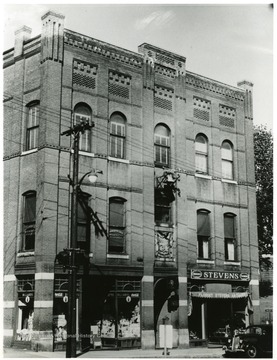
- IDNO:
- 001270
- Title:
- John Brown Bell
- Date:
- undated
- Description:
- The John Brown Bell at Marlborough, Massachusetts, hanging over the street from the top of the second story window of the Grand Army Legion Building. It was 'liberated' by Marlborough men in 1861, but it was thirty years before it reached their home city. See West Virginia Collection Pamphlet 6610 and Boyd Stutler's 'WV in the Civil War.'

- IDNO:
- 001273
- Title:
- War Correspondents Monument
- Date:
- undated
- Description:
- The War Correspondents Monument, a 50 foot high structure which sits in the middle of Crampton Gap, South Mountain, a few miles east of Harpers Ferry. Erected through the efforts of George Alfred Townsend, himself a famous war correspondent in the Civil War, known as 'Gath,' the monumental arch was dedicated on October 16, 1896. Now under the care of the National Park Service, surrounded by Gathland Park, a Maryland recreation center, the arch was re-dedicated on October 16, 1946, to the correspondents of all wars. Marble tablets bear the names of 147 Civil War correspondents and artists, while ranged at the end four bronze tablets tell the action in Crampton Gap, and important phases in the battle of South Mountain. See West Virginia Collection Pamphlet 6610 and Boyd Stutler's 'WV in the Civil War.'

- IDNO:
- 001276
- Title:
- Burning of the U. S. Armory and Arsenal at Harpers Ferry
- Date:
- 1861/04/18
- Description:
- Burning of the U.S. Armory and Arsenal at Harpers Ferry on the night of April 18, 1861. From a sketch in Leslies Weekly. See West Virginia Collection Pamphlet 6610 and Boyd Stutler's 'WV in the Civil War.'

- IDNO:
- 001277
- Title:
- Seventh W. Va. Infantry Monument at Gettysburg
- Date:
- undated
- Description:
- Monument erected to commemorate the seventh W. Va. Vol. Infantry on the Gettysburg Battlefield. One of four W. Va. Memorials. See West Virginia Collection Pamphlet 6610 and Boyd Stutler's 'WV in the Civil War.'
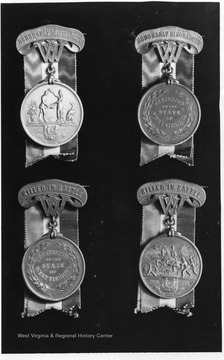
- IDNO:
- 001278
- Title:
- West Virginia Civil War Service Medals
- Date:
- undated
- Description:
- The first two classes of the West Virginia Civil War medal, front and back. For the Honorably Discharged and for those killed in battle, front and back. See West Virginia Collection pamphlet 6610 and Boyd Stutler's 'WV in the Civil War.'
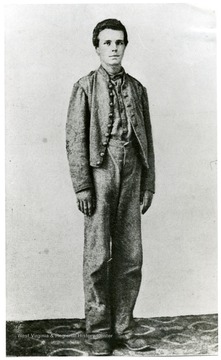
- IDNO:
- 001280
- Title:
- Union Army Private Archibald H. Rowand Jr., in Confederate Uniform
- Date:
- ca. 1862
- Description:
- Private Archibald H. Rowand, Jr. of Company K, 1st West Virginia Cavalry. He became senior scout attached to the staff of Union General Phil Sheridan, and was awarded the Medal of Honor. See West Virginia Collection Pamphlet 6610 and Boyd Stutler's 'West Virginia in the Civil War.'
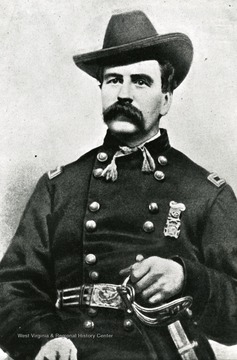
- IDNO:
- 001282
- Title:
- Capehart, Colonel Henry
- Date:
- undated
- Description:
- Portrait of Colonel Henry Capehart of Wheeling (later Brevet Major General), who commanded the WV Cavalry Brigade at Cedar Creek where his troopers struck terror in the ranks of the Johnny Rebs. See West Virginia Collection Pamphlet 6610 and Boyd Stutler's 'WV in the Civil War.'











